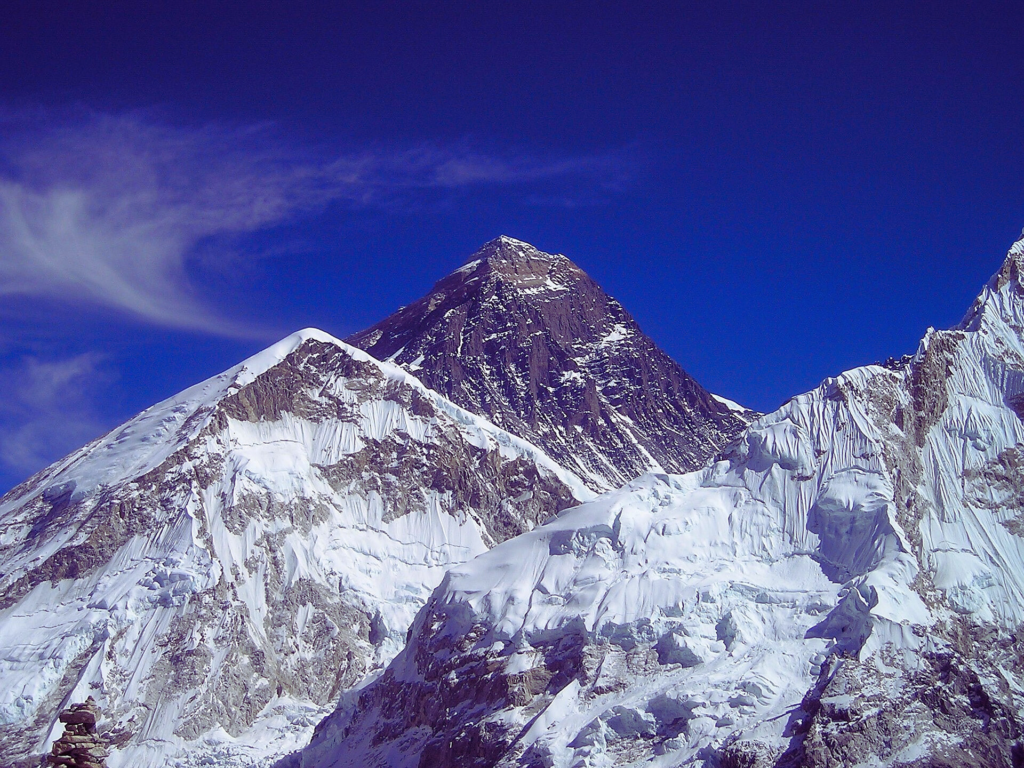Mount Everest: The Tale of Earth's Loftiest Giant
Long ago, when Earth was still sculpting her landscapes, the Himalayas were born—a result of continents colliding in a titanic embrace. From this cosmic upheaval emerged Sagarmatha (Mother of the Sky, in Nepali) or Chomolungma (Goddess Mother of the World, in Tibetan)—a peak so tall, it touched the heavens. Today, the world knows her as Mount Everest, standing at a staggering 8,848.86 meters (29,031.7 feet), the highest point on Earth. But Everest’s story is more than just her height—it’s a saga of discovery, ambition, and humanity’s indomitable spirit.

The Awakening: Everest Enters the Map
For centuries, the towering peak remained a sacred enigma for the local Sherpa and Tibetan people. It wasn’t until the 19th century that the Western world took notice. During the Great Trigonometric Survey of India in 1856, British surveyors led by Sir George Everest identified the peak as the tallest on Earth. It was initially called Peak XV, but in 1865, the Royal Geographical Society named it Mount Everest, honouring Sir George.
The Call to Conquer
The 20th century brought adventurers and explorers determined to stand atop Everest’s icy summit. The mountain, however, proved to be an unforgiving adversary.
The Pioneers (1920s): Early expeditions by British mountaineers, including the legendary George Mallory, sought to reach the peak. Mallory’s famous response to why he wanted to climb Everest—“Because it’s there”—echoed the spirit of the age. Tragically, Mallory and his partner Andrew Irvine disappeared near the summit in 1924, leaving the question of whether they succeeded unanswered.
The Breakthrough (1953): After decades of attempts, it was on May 29, 1953, that history was made. Sir Edmund Hillary of New Zealand and Tenzing Norgay, a Sherpa guide, became the first climbers to officially reach the summit. Their triumph was a testament to teamwork, grit, and respect for the mountain.
Challenges and Triumphs Over Time
Mount Everest became a symbol of human ambition, but climbing her is no small feat. Fierce winds, avalanches, crevasses, and the infamous Death Zone (above 8,000 meters) make every ascent a battle for survival.
- The Golden Era of Climbing (1970s-1990s): With improved gear and techniques, climbers from around the world flocked to Everest. The first woman to summit was Junko Tabei of Japan in 1975.
- Commercial Climbing Boom (2000s): Expeditions became more accessible, attracting climbers of all skill levels. But increased traffic raised concerns about overcrowding and environmental impact.
Everest’s Dual Legacy
While Everest is a beacon of human achievement, she also stands as a stark reminder of nature’s power and fragility. The mountain has claimed hundreds of lives, their stories frozen in time on her icy slopes. At the same time, environmental changes and the impact of tourism have sparked global conversations about preserving her majesty.
The Soul of Everest
To climb Mount Everest is to face not just physical challenges but also inner ones. Those who have stood on her summit often describe a profound sense of connection—to the Earth, to themselves, and something greater than humanity.
The Sherpa people, Everest’s eternal guardians, hold a deep reverence for the mountain, believing she is alive, watching over all who dare to climb her. Their culture and spirituality enrich the Everest experience, reminding climbers that conquering her is not just about reaching the top but doing so with respect and humility.
The Endless Allure
Mount Everest’s story continues to evolve, with each climber adding a new chapter. Her towering presence is both a challenge and an inspiration, a reminder that no matter how high we aim, it’s the journey that defines us.
So, as you gaze at the snow-capped peak piercing the clouds, imagine the countless dreams, sacrifices, and triumphs etched into her slopes. Everest is more than a mountain—she is a living legend, calling to adventurers across the ages.
FAQ about Mount Everest
Mount Everest is located in which country?
Mount Everest is located on the border between Nepal and the Tibet Autonomous Region of China. Its peak lies in Nepal, making it a prominent attraction there, and it’s the world’s tallest mountain at 8,848.86 meters (29,031.7 feet).
How old is Mount Everest?
Mount Everest is approximately 50 to 60 million years old, formed during the collision of the Indian and Eurasian tectonic plates. This ongoing tectonic activity continues to push the mountain higher by a few millimetres each year.
Who is Everest’s first girl?
The first woman to climb Mount Everest was Junko Tabei from Japan. She reached the summit on May 16, 1975, overcoming harsh weather and an avalanche, becoming a symbol of perseverance and women’s empowerment in mountaineering.
1 thought on “Mount Everest”